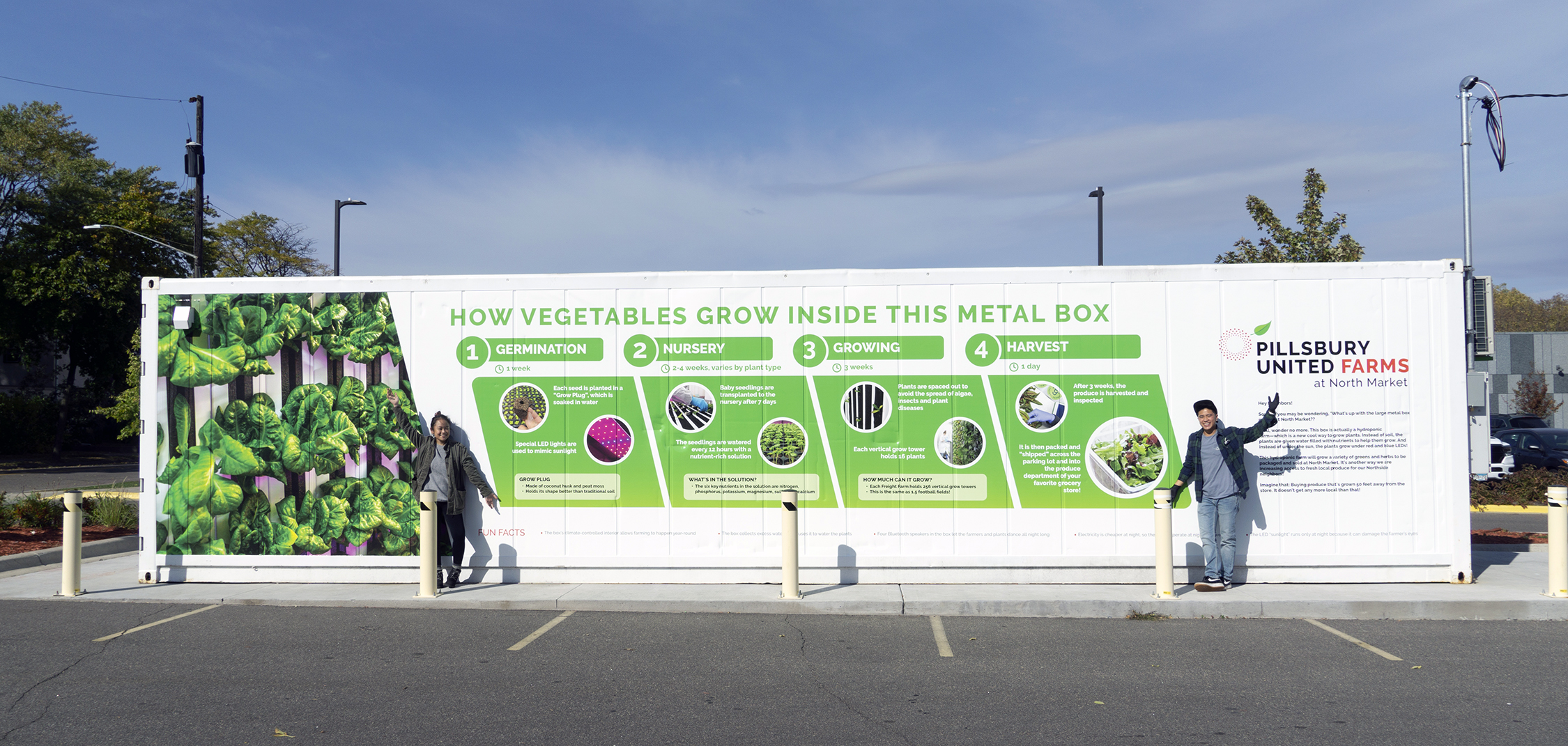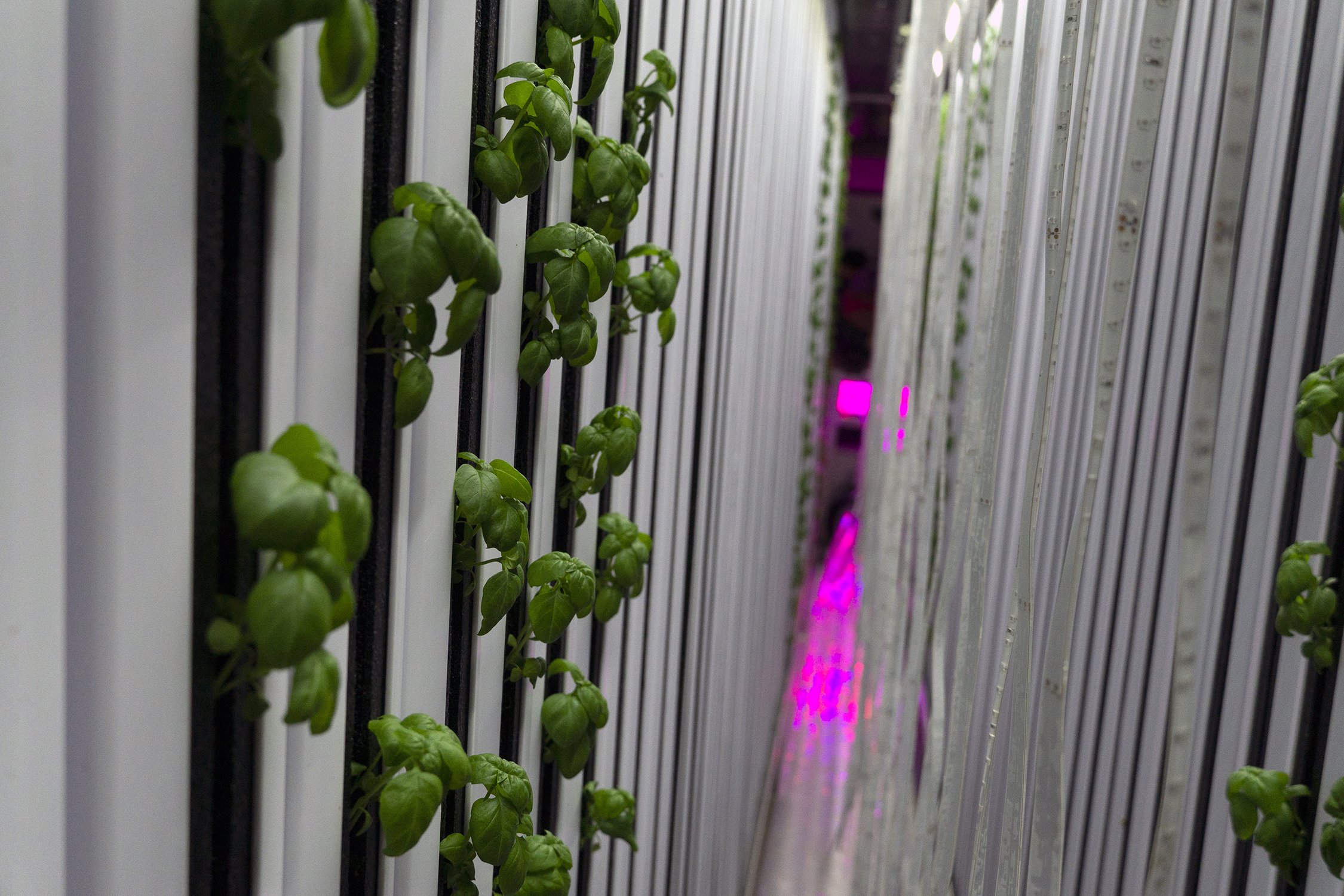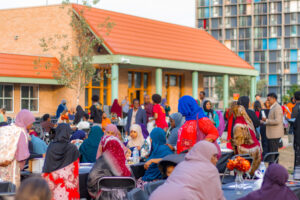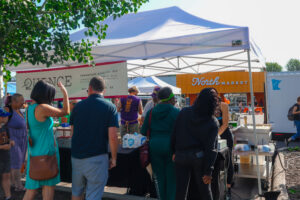If you’ve visited North Market recently, you may have noticed a new neighbor in our parking lot. In partnership with Freight Farms, we’ve installed a hydroponic farm on-site, providing a year-round growing environment that will supply North Market shoppers with local, fresh greens and herbs.
But when we say that the Freight Farm at North Market is a “self-contained hydroponic growing environment,” what does that actually mean? What’s happening within these corrugated metal walls? What is the journey of a seed as it makes its way to the North Market produce aisle?
Step 1: Germination
The first step in the life of a plant is germination. We plant our seeds in a specialized “grow plug” made of coconut husk and peat moss. This eco-friendly growing material keeps its shape and holds water better than traditional soil, making it a better fit for our specialized hydroponic drip system.
Once the plug has been seeded, it is soaked in water and placed under red-and-blue LED lights. Our seeds require a lot of light at this stage—19 hours of sunlight every day over the next week—and the farmer closely monitors the growing environment to maintain an ambient temperature of 70° F.
Step 2: The Nursery
After seven days, our seeds have sprouted, and it’s time for their first move. Our baby seedlings are relocated to the upper level of the harvest table, which doubles as a nursery. Here, the tiny sprouts are watered every 12 hours with a special nutrient-rich solution to ensure they are free of disease and can begin to grow strong roots.
The baby plants continue to receive 19 hours of artificial sunlight per day. Depending on the particular crop, a seedling can spend anywhere between 2-4 weeks growing in the nursery before it’s ready for the next stage.
Step 3: Growing
Once a seedling has matured, it’s time to transplant. The young crops are carefully removed from their seed trays and transplanted to vertical grow towers. These grow towers take up the majority of space inside the Freight Farm. Each plant is carefully spaced out to avoid the spread of algae, insects, and plant diseases.
Although the grow towers are made of plastic, a felt wicking strip in the center allows water to drip down and hydrate the crops. The interior of the Freight Farm holds 256 vertical towers, each of which holds approximately 16 plants—meaning that the combined grow-area of the Freight Farm equals approximately 2-3 acres of outdoor field space.
Step 4: Harvest
Finally, after three weeks in the grow towers, it’s time to harvest. The farmer uses a special harvest knife to remove the plant from the tower. Although this is the shortest step, it requires very careful planning on the part of the farmer. Ideally, when one plant is harvested, a new seedling is ready to take its place in the grow tower. This ensures a steady supply of fresh produce for North Market shoppers.
After a quick inspection to ensure the plant is ready to go, the produce is packed and transported across the parking lot for sale at North Market.
Did you know?
- The interior of the Freight Farm is climate-controlled, meaning that plants can grow year-round—from the hottest summer day to the coldest winter night.
- The Freight Farm is slightly tilted! While it’s not noticeable to the farmer, the very slight (3°) angle allows for any excess water to drain back into the Freight Farm’s storage tanks. Reverse-osmosis filtering helps purify the water, making it safe once again for human (and plant) consumption.
- The Freight Farm interior is equipped with 4 Bluetooth speakers, allowing the farmer and seedlings to listen to music all day.
- “Daytime” for our crops actually takes place at night! The Freight Farm’s LED lights create a lot of heat and can damage the farmer’s eyes without special protective glasses—so it’s easier to run the lights during nighttime hours, when the farmer isn’t present. By using the majority of our electricity at night, we also reduce the farm’s operating costs.





